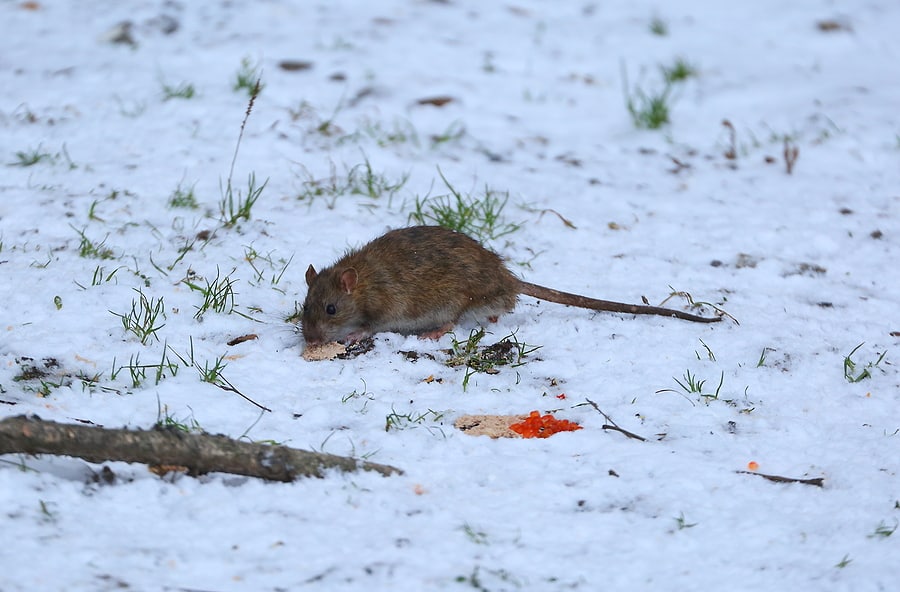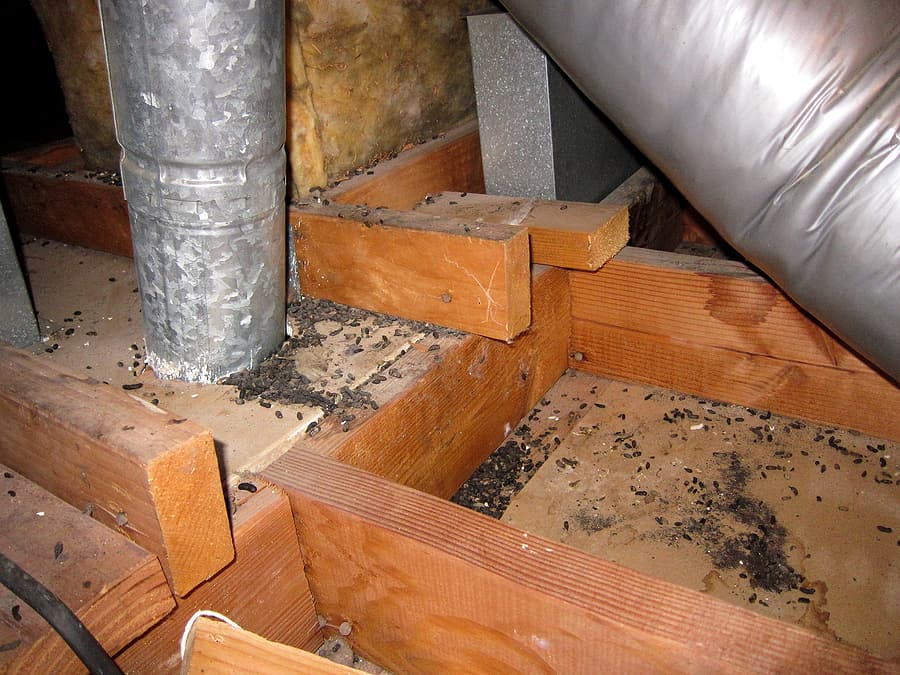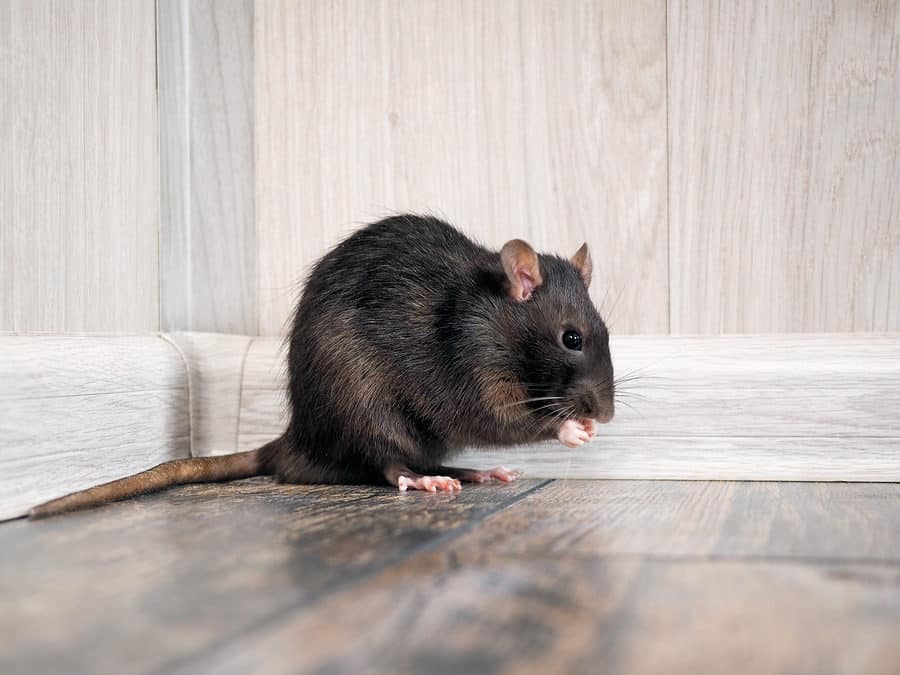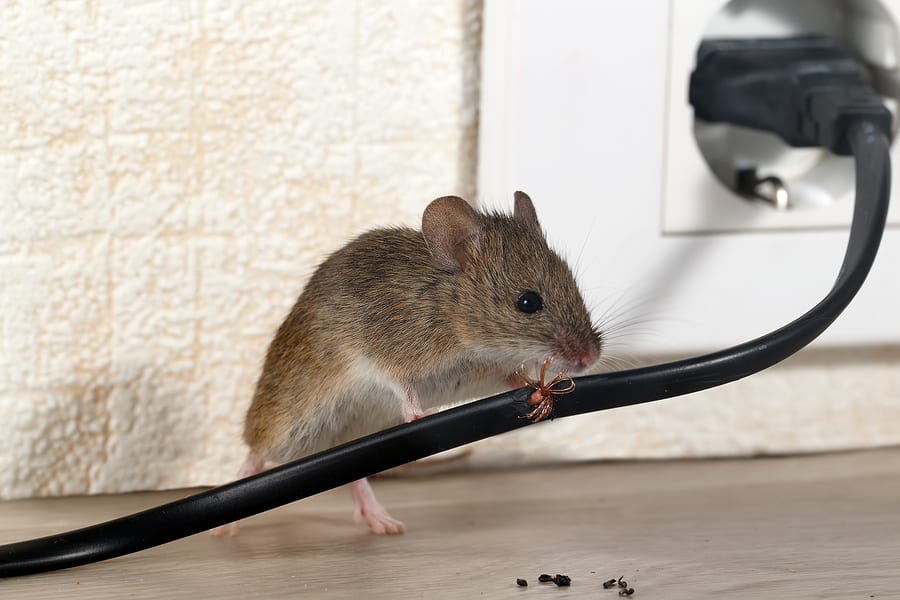READY TO GET STARTED?
REQUEST A FREE ESTIMATE
Fill out the form below or call (888) 466-7849 for a free, no-obligation estimate.

A common myth is that rodents like rats, mice, and even squirrels hibernate in the winter. Unfortunately for us, this is not true. While their activity may slow down while outside in the colder months, rodents are actually active year-round. Rodents can survive a wide range of places and climates. They are also known to carry diseases that can easily be spread to humans. Rodent-borne diseases like hantavirus and salmonella can be serious when contracted by people.
Rodents have developed several survival mechanisms to get through the winter.
In late summer and fall, rodents will start gathering as much food as possible to store in their burrows and nests for the winter. While they don’t hibernate, they will stockpile resources to help limit the number of times they have to venture out in the cold in search of food. They also have to increase the amount of food they eat to help retain their body temperature.
Rodents need a warm place to spend the winter. Like other overwintering pests, they will try and access your home to seek shelter from the cold. Rats, in particular, are capable of chewing through cinder blocks, lead, glass, aluminum, vinyl, brick, and even concrete in order to access your home. If they can’t get indoors, they are also great at digging tunnels and will burrow for shelter, usually under walls or near utility lines that come into your home.
Rodents are extremely creative when it comes to survival. They can adapt to most any situation. Our homes provide the ideal opportunity for rodents to overwinter by providing convenient cavities in walls, attics, crawlspaces, and between floors that protect them from the elements. These hiding spots are usually filled with insulation, as well, which gives them the perfect nesting material. Add in the heat we turn on in the winter and the food crumbs and other food sources we provide and they have an ideal living situation during the winter.
To keep these pests out this winter, try these rodent prevention tips:
If you have a problem with rodents, contact your local pest control company who can help identify the type of rodent you are dealing with and set you up with the appropriate rodent control program.
Prevent Bed Bugs this Holiday Season
How to Deal with a Pest Delivery at Your Business

Rodents can wreak havoc on your home, chewing through wires and insulation and contaminating surfaces with their urine and feces. Rodents are also known for carrying and transmitting serious diseases to humans. You may not see a live rodent in your home until an infestation is already established. It is important to know the signs of a rodent infestation so you can identify the problem before it gets out of control. Here are 9 warning signs of a rodent infestation to look for in your home.
Prevention is critical to keeping rodents and other pests from taking over your home. Keep them out of your home with these rodent prevention tips:
If you suspect you have a problem with rodents or any other pest, your local pest control company can perform a thorough home inspection which will help determine the type of rodent you are dealing with, their patterns of activity, what’s attracting them to your home, and which treatment method is best for elimination and ongoing prevention.
What Is The Most Effective Termite Treatment?
5 Pests That Can Destroy Your Lawn

During the colder months, rats are looking indoors for shelter, providing them with warmth and a food source. Once inside, they can not only cause considerable damage to homes by gnawing electrical wires, but they can also pose health risks as they are known to carry bacteria, such as salmonella. To help avoid these pests, every homeowner should utilize preventative measures throughout their house for rodent control.
Keeping the exterior of your home well-sealed is the first step to prevent rats from the inside. Check around the outside of your home for any gaps or holes that are leading inside. Make sure to seal around any openings in the walls, especially utility pipes and vents. Consider installing weather stripping for the gaps in doors and windows.
While outside, look throughout your yard for debris such as piles of leaves or excess woodpiles. Rats will often use these to hide or take cover. Consider keeping your woodpiles 20 feet from your home. Try to keep your shrubbery away from the sides of your home and mow the grass frequently.
Rats are always in search of a food source. Eliminating access to food from your property is another great way to keep them from infesting. If you leave your pet bowls outside, consider bringing them inside to avoid attracting them. Make sure to keep all food, including pet and bird food, in airtight containers. Likewise, make sure your trash cans are sealed tightly and take the garbage out frequently.
Suspecting that you have a rat inside your house is always alarming. It’s best to contact a pest control professional who can inspect your home, identify the type of rat, and set you up with a comprehensive treatment plan.

Dealing with a rodent is never an ideal situation for a homeowner. These creatures can pose serious health risks and property damage issues for your home and family. Different factors can attract varied species of rodents. To avoid these pests, every homeowner should be aware of the different types of rodents that can invade, along with how to prevent each one.
Norway Rats
Norway rats are one of the largest species of rats, measuring around 10 inches in body length. These rats have thick fur, usually brown with black shading. Norway rats are nocturnal and will often burrow into piles of garbage to search for food. If these creatures invade homes, it’s usually due to sparse food sources. They will typically invade areas in the house that go undisturbed such as crawlspaces or basements.
Norway rats can cause serious property damage by gnawing through materials like plastic and lead pipes. They can also bring house fleas and mites into homes. To prevent these rodents, make sure to tightly seal all trash cans outside your home. Check around the exterior and foundation of the home to search for any holes or gaps leading inside and seal them if needed.
Roof Rats
Roof rats are about 8 inches long with slender bodies. Their fur is smooth with gray coloring and black shading throughout. A great way to identify them is that their tails are darker than Norway rats and they are usually hairless and scaly. These rats are known to be extremely agile and skilled climbers. They live in colonies and prefer to nest in higher levels of buildings, trees, and homes. While they do prefer to eat fruit, they will still eat any available food source they can find.
If you happen to have fruit trees on your property, it’s important to clean up any fallen fruit as soon as possible as it will attract these creatures to your yard. Repair any roof damage such as broken tiles or gaps under eaves as these rats can sneak into any gap or hole that is as small as a quarter.
House Mouse
Light to gray in color, house mice weigh around 1 ounce or less! These small rodents like to nest in dark, secluded areas inside structures. House mice are excellent climbers and can jump up to a foot in height, which allows them to reach isolated or withdrawn areas.
House mice can be a threat to homes as they are known to spark electrical fires by gnawing on wires inside the house. They can also pose serious health threats as they can contaminate stored food and spread diseases such as salmonella. House mice often like to hide throughout household clutter. It’s essential to keep storage areas clean and well-organized and keep the boxes off the floor.
If you start to see signs of rodents in your home, contact a professional pest control company to ensure they don’t multiply and cause severe damage!

While rodents will typically infest your home during the colder months of the year, it is still possible for these pests to be found inside the home during the warmer months too. If a rodent, like a mouse or rat, is found inside a house during spring and summer months, it’s likely that they’ve been there since winter! Rodents can cause expensive damage to your property. Learning some common signs of rodents in your home is the first step in identifying an infestation and establishing a rodent control plan.
One of the most common and telling signs that a rodent is in your home is finding their droppings. Measuring around 1/8 to ¼” long, droppings are left behind in places where food is stored, such as the kitchen and pantries. Rodent feces can be dangerous as it can carry harmful bacteria and transmit dangerous diseases such as salmonella. When looking for these droppings, make sure to check under the sink, in pantries, in cabinets, along baseboards, and on top of wall beams.
Mice and rats are always in search of food and water and will often chew their way to it. Both rodents can cause serious damage by chewing through materials found throughout the house, such as plastic and lead pipes. House mice and Norway rats are known to gnaw on wires that are behind walls, causing the dangerous risk of a fire. Check throughout the house for any suspicious chewing marks on wires, pipes, or even plastic containers as these can be an indication that a rodent is inside your home.
Hearing strange noises at night is always concerning, but it’s also a common indicator that rodents have made their way inside. These pests are typically active during the night and, if inside, hearing them scurry around the house is common. Rodents usually prefer dark, secluded spots to build their nests, such as in attics or in between walls. Checking these areas could give you the answer on whether rodents have been infesting!
If you suspect a rodent infestation in your house, contact your local pest control company who can safely remove them from your home.